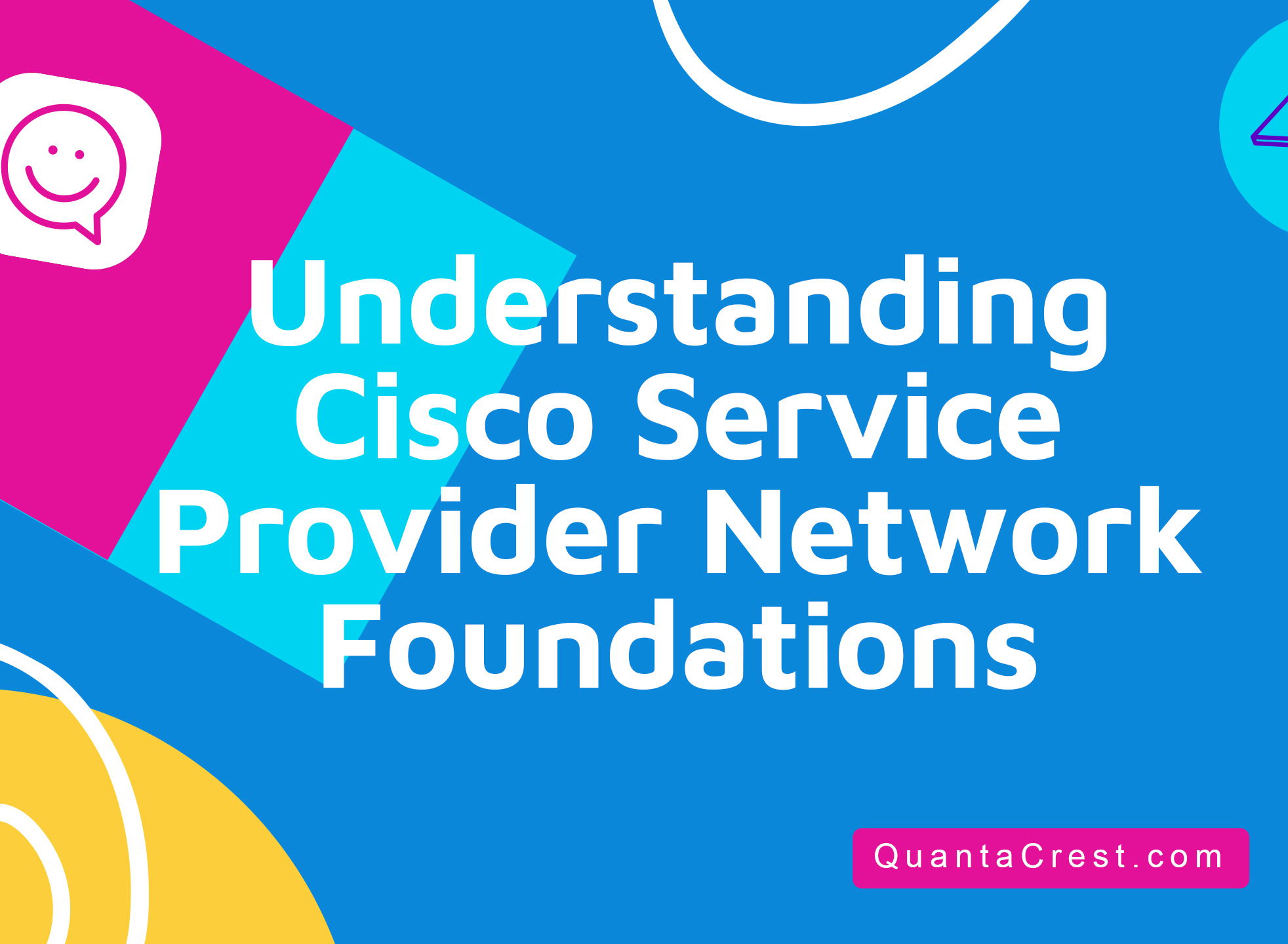Understanding Cisco Service Provider Network Foundations
in CiscoAbout this course
Course Overview
The Understanding Cisco Service Provider Network Foundations (SPFNDU) course is designed to provide you with the foundational knowledge for the suite of Cisco® CCNP® Service Provider courses. The course expands what you learned from the Cisco CCNA® course with a focus on theoretical and practical knowledge needed for the Service Provider environment. Through a combination of lessons and hands-on practice, you will learn about architectures, protocols, software and hardware platforms, and solutions within the Service Provider realm. While this course does not lead directly to a certification exam, it does cover foundational knowledge critical to the success in the Service Provider Technology track.
Target Audience
Individuals looking to gain a foundation-level understanding of Cisco Service Provider architectures, protocols and software solutions.
Course Objectives
After completing this course you should be able to:
- Describe network architectures, devices, and software used by service providers
- Describe the various Internet governance organizations, their roles, and tools available for governance information verification
- Configure Cisco Internetwork Operating System (Cisco IOS®) and Cisco IOS XE routers
- Describe Cisco IOS XR software, perform initial configuration, and explain platform daily tasks
- Describe various access and core technologies used by service providers
- Describe various major switching technologies used by service providers
- Describe major overlay technologies and their usage, and configure Virtual Extensible LAN I (VxLAN)
- Describe various major routing protocols used by service providers
- Configure Layer 3 services used by service providers
- Describe Multiprotocol Label Switching (MPLS), components, protocols, and MPLS usage
- Describe usage of various services used and maintained by service providers
- Introduce Linux networking, Bourne Again Shell (BASH) scripting, and their usage within Cisco IOS XR software
Course Content
Introducing Service Provider Architectures
- Bus Topology
- Ring Topology
- Star Toplogy
- Mesh Topology
- Clos Toplogy
- Device Roles
- Physical Devices
- Virtual Devices
- Cisco IOS XE Software Overview
- Cisco IOS XR Software Overview
- Internet Service Providers
- Internet Exchange Points
- Cloud Service Providers
Describing Internet Governance Organizations
- Internet Engineering Task Force
- Institute of Electrical and Electronics Engineers
- International Telecommunication Union
- Metro Ethernet Forum
- European Telecommunications Standard Institute
- Internet Assigned Number Authority
- Regional and Local Internet Registries
- Network Operators Group
- Other Bodies and Tools
Configuring the Cisco IOS and Cisco IOS XE Router
- Access and Initial Configuration
- Configuration Management
- Day Zero Provisioning
- Connectivity and Connectivity Verification on Cisco IOS XE Software
- Monitoring Hardware
Configuring Cisco IOS XR Router
- Access and Initial Configuration
- Configuration Management
- Day Zero Provisioning
- Connectivity and Connectivity Verification on Cisco IOS XR Software
- Monitoring Hardware
Introducing Access and Core Technologies in the Service Provider Environment
- Optical Connectivity
- DWDM Connectivity
- xDSL Lines
- Cable Connectivity
- Wireless Usage in Service Providers
- Ethernet and Ethernet Evolution
Introducing Routing Technologies in Service Provider Environment
- Routing Protocols Overview
- Link-State Protocols
- IS-IS Overview
- OSPF Overview
- Distance Vector Protocols
- RIPv2 and RIPng Introduction
- BGP Introduction
Describing MPLS
- MPLS Overview
- MPLS Features and Benefits
- MPLS Architecture
- MPLS Labels
- Label Distribution Protocol
- Label-Switched Path
- MPLS Applications Overview
Implementing Layer 3 Services
- IP SLA Overview
- First Hop Redundancy Protocols
- Hot Standby Router Protocol
- Virtual Router Redundancy Protocol
- Gateway Load Balancing Protocol
- VRF Overview
- VRF Usage
- VRF Monitoring
Introducing Switching Technologies in the Service Provider Environment
- Metro Ethernet Overview
- E-Line Service
- E-LAN Service
- E-Access Service
- E-Tree Service
- VLAN Overview
- QinQ Overview
- Provider Backbone Bridging
Introducing Overlay Technologies
- VXLAN Overview
- VXLAN Gateway
- EVPN Overview
Implementing Service Provider Services
- DHCP Overview
- DHCP Configuration
- DNS Introduction
- NTP Overview
- Precison Time Protocol
Introducing Programmability on Cisco IOS XR Routers
- Linux Primer for Network Engineers
- Linux Networking
- Cisco IOS XR Application Hosting and Programmability
Labs:
- Review Lab Environment
- Examine Governance Data
- Perform an Initial Cisco IOS XE Configuration
- Configure Connectivity and Connectivity Verification on Cisco IOS XE Devices
- Perform Initial Cisco IOS XR Configuration
- Configure and Verify Connectivity on Cisco IOS XR Devices
- Configure IS-IS
- Configure RIPv2 and RIPng
- Configure Basic BGP
- Configure MPLS
- Configure IP SLA
- Configure HSRP with Object Tracking
- Configure VRFs
- Configure NTP
- Use Linux CLI
- Configure Cisco IOS XR Using a Bash Script
Course Prerequisites
Attendees should meet the following prerequsites:
- Knowledge of IPv4 and IPv6 Transmission Control Protocol/Internet Protocol (TCP/IP) networking
- Familiarity with typical service provider environment
- Basic knowledge about networking devices and their roles
Test Certification
Recommended as preparation for the following exams:
- There are no exams currently aligned to this course
Follow on Courses
The following are recommended for further study:
- SPCOR - Implementing and Operating Cisco Service Provider Network Core Technologies
Comments (0)






